Language arts seems like this overwhelming subject that has so many different facets, parents become concerned that they’re not doing it well enough!
One of the more frequent questions I hear from homeschoolers is “What do I need to cover for language arts in the _____ grade?”
If you choose to buy an all-in-one curriculum that has a complete language arts program included, then you don’t have to worry, everything your child needs to know will be covered.
But maybe you prefer to use a more eclectic approach like I did, where you choose different curriculum providers for each subject. Then it’s common to feel a bit uncertain as to whether you’re covering all the areas of language arts because there are so many different facets to it!
There’s handwriting, phonics, reading, literature analysis, grammar, spelling, creative writing, essay writing, research paper writing, poetry, and vocabulary. No wonder we feel overwhelmed and unsure! That’s a lot to cover!
The good news is, you don’t need to teach all of these aspects of language arts every year!
Language arts, much like math, has a specific order that you should teach your child the information they need to know. The information learned in language arts builds upon itself. A child needs to learn his letters and the sounds of the letters before he can sound them out and learn to read them. He can’t really start writing creatively until he learns to read well.
What should you teach for language arts and when?

Photo credit – Ben White from Unsplash
God has created every child unique, therefore they may be ready to learn the different skills at a slightly different time than another child might be.
I have greatly appreciated the book “Better Late Than Early” by Raymond & Dorothy Moore.
 The premise of this book is that most children aren’t ready for formal education till between the ages of 8 to 10! They suggest that waiting till then allows children to become more mature and ready to think more logically. Boys, in particular, may not be ready to read till after age 7, or even later!
The premise of this book is that most children aren’t ready for formal education till between the ages of 8 to 10! They suggest that waiting till then allows children to become more mature and ready to think more logically. Boys, in particular, may not be ready to read till after age 7, or even later!
One of our boys didn’t really learn to read till he was 9 years old. I think I tried every phonics program available at the time, and nothing worked…until he was ready. Once he started reading, he quickly caught up to other kids his age and was an excellent student who went on to be an honor student in college. That reading delay didn’t affect him in the long run!
Because of this, I hesitate to give you an age when a child should be completing certain skills in language arts, because it will vary from child to child. Please keep this in mind as I give you general guidelines for what you might cover at each grade level.
I also know that many of us feel pressure to begin teaching our children before 8-10 years of age as Raymond Moore recommends. Our society is pushing for children to be taught to read earlier and earlier. I think it’s okay to test the waters and introduce phonics, watching to see whether our child is ready for formal learning or not.
There’s a great book that gives very specific guidelines on what your child should know in each grade called “What Your Child Needs To Know When According to the Bible/According to the State” by Robin Sampson.
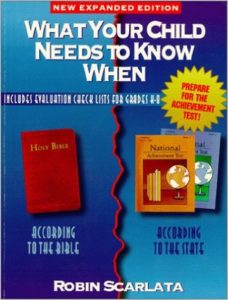 Much of what I’m sharing here is taken from this book and other research, as well as my own experience. I share all this with the premise that you should back off on formal teaching if you see your child isn’t ready. They will catch up when they’re ready!
Much of what I’m sharing here is taken from this book and other research, as well as my own experience. I share all this with the premise that you should back off on formal teaching if you see your child isn’t ready. They will catch up when they’re ready!
Here’s a rundown of the typical course of study for language arts skills for the early years of pre-kindergarten through elementary school age:
Pre-K:
Phonics: for Pre-K children focus on building fine motor skills and gross motor skills, learning colors and shapes, and just having fun learning from real life, whatever God brings your way!
If your child is ready, teach them the letters and the sounds that the letters make. You DON’T need an expensive curriculum for Pre-K! For language arts, you can use a simple book that has activities related to the letters and their sounds such as: “Alphabet Activities” by Jill M Coudron. (This is an older book, so you may only find it “used”, but it’s really good and inexpensive!). Or you could use the “Explode the Code Primary A, B, C” series of books to teach the letter sounds and letter formation.
 Keep things simple! You don’t need more than 10 minutes a day to work on phonics type skills. Use phonics games and READ ALOUD to them a lot at this age! They love it and reading aloud will help develop literacy skills.
Keep things simple! You don’t need more than 10 minutes a day to work on phonics type skills. Use phonics games and READ ALOUD to them a lot at this age! They love it and reading aloud will help develop literacy skills.
Kindergarten:
Phonics, Reading & Handwriting: After learning the sounds of the letters, children are ready to begin blending the sounds together to form words. Teach them the phonics rules and help them learn how to apply them as they blend the sounds together to make words. Some people use “Bob books” and teach the concepts and rules as they go through the different sets of books. The “Explode the Code” series is great for teaching phonics rules also. Some prefer a well laid out phonics curriculum that incorporates more of a multisensory approach. Because of our son’s struggle, I went with a program that used a multisensory approach. There are so many phonics programs out there to choose from, it can be a little overwhelming. Some of my favorite multisensory phonics curricula are “Sing, Spell, Read and Write”, “All About Reading”, and “Foundations: Logic of English”.
You can go to www.cathyduffyreviews.com to read reviews about the different phonics programs available to determine what will meet your needs best. Seek the Lord and do some research to find the best approach for your child.
Have your child work on recognizing and writing their name, as well as recognizing the capital and lower case letters and writing them. Some kids will be reading simple words and sentences in Kindergarten, but if your child isn’t ready to begin blending the letter sounds together yet, don’t fret! It’s not uncommon for kids this age to not be ready to read! If your child doesn’t seem ready, read the book “Better Late Than Early” by Raymond and Dorothy Moore. Continue to READ ALOUD to your kids every day!
Remember for young children, keep teaching times short! Kindergarteners have a short attention span, so 10 minutes on phonics is enough! Use phonics games to reinforce what you’re teaching.
1st-2nd grade:
Phonics, Reading, Handwriting, & Spelling: continue working on the phonics rules, developing their reading skills as well as their handwriting skills. Spelling rules should be added here, as well as learning to read and write sight words using the Dolch Sight words list. A great multisensory spelling program is “All About Spelling.” “Spellwell” is also popular and better for independent study.
You’ll begin teaching basic grammar skills such as punctuation and capitalization. Having your child do “copy work” to build writing, spelling and grammar skills is very helpful. (This is where they copy phrases from scripture or literature and you work specifically on teaching grammar & writing skills based on what is in the passages being written.) Some children are ready for “dictation” at this age as well. This is when you read a passage to them and they write it without seeing it. You can begin teaching synonyms, homonyms, and antonyms at this point also. Use games and activities to help them retain what they’re learning.
Writing simple sentences and thank you notes are good skills to develop. Keep working on improving their handwriting. Studies are showing that teaching cursive is very helpful, especially for kids with dyslexia, so teach cursive to your children as you teach handwriting. A great handwriting program that uses scripture is “A Reason for Writing”.
Don’t forget to teach dictionary skills too!
Reading comprehension is important at this point as well. Are they understanding what they’re reading? Can they participate in a discussion related to what you’re learning?
Remember to KEEP READING ALOUD to them! Teach them to look for the main idea in a story, and to recognize who the main characters are, and what the plot is.
3-4th grade:
Spelling, Grammar, Writing, and Reading: continue to work on any skills not mastered in previous years. If you haven’t already done so, teach prefixes, suffixes and word roots to help build spelling skills. If your child is a strong reader, you can begin adding more writing assignments and even use a formal writing program to teach writing skills (only if their reading skills are strong). “Institute for Excellence in Writing” is one of the most popular writing programs out there, but there are many others that are good. “Brave Writer”, and “Here to Help Learning”(great for kids who like drama and visuals), are all good programs as well.
Opinions vary on when to introduce grammar. Some believe 4th grade is a good time to begin working on learning more in depth grammar skills to improve their writing. Others say to wait until 5th or 6th grade or to just learn grammar as you read and write.
If you want a formal grammar program, “Winston Grammar” is very thorough and helpful for students who like hands-on learning, because it uses cards to denote the different parts of a sentence. “Easy Grammar” is a simple grammar program that has a page a day to complete and is truly one of the easier programs out there. Investing in the “Blue Book of Grammar” for you as a teacher will help to build your confidence, it’s a great reference when you’re not sure what the grammar rule is! Some writing programs also include grammar training, so check when you buy your writing program to see if
Investing in the “Blue Book of Grammar” for you as a teacher will help to build your confidence, it’s a great reference when you’re not sure what the grammar rule is! Some writing programs also include grammar training, so check when you buy your writing program to see if grammar is included. (For example, IEW and Brave Writer all offer grammar workbooks too)
Have them read independently for a ½ hour to 1 hour per day, as this will develop their vocabulary skills, spelling skills and reading comprehensions skills. Keep reading aloud to them also!
5th-6th grade:
Grammar, Writing, Reading, Literature, and Spelling: you’ll continue to work on these skills, developing them further. Writing should include paragraph writing, book reports, and short essays as well as creative writing. Encourage discussion based on what they’re reading or based on what you’re reading together to test reading comprehension.
Learning the different types of literature (fiction, nonfiction, fairy tales, biographies, autobiographies, poetry, etc.) is helpful in these years, and also the different aspects of a story. (plot, characters, point of view, etc.) Continue to work on spelling until you feel your student has it well mastered.
Yes, keep reading aloud to students in these grades as well!
In summary:
There are many good choices for curriculum available to teach language arts. You can use programs that are specific to each of the different facets of the program (i.e. spelling workbooks, grammar workbooks, etc.), or you can buy a language arts program that has all aspects included, based on what grade your student is at. I tried it both ways and found that it was helpful to use something like “Learning Language Arts Through Literature”
 or “Total Language Plus,” both of which cover most aspects of language arts fairly well. Then I added specifically focused curriculum for areas my kids were weak in, such as spelling or writing basics.
or “Total Language Plus,” both of which cover most aspects of language arts fairly well. Then I added specifically focused curriculum for areas my kids were weak in, such as spelling or writing basics.
Seek the Lord for what you need to teach your child each year in language arts, and check out the resource “What Your Child Needs to Know When” by Robin Sampson for more details on what to cover each year.
My next post will be on language arts for the Middle School and High School years!

Photo credit – Ben White from Unsplash
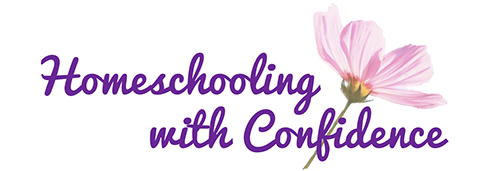
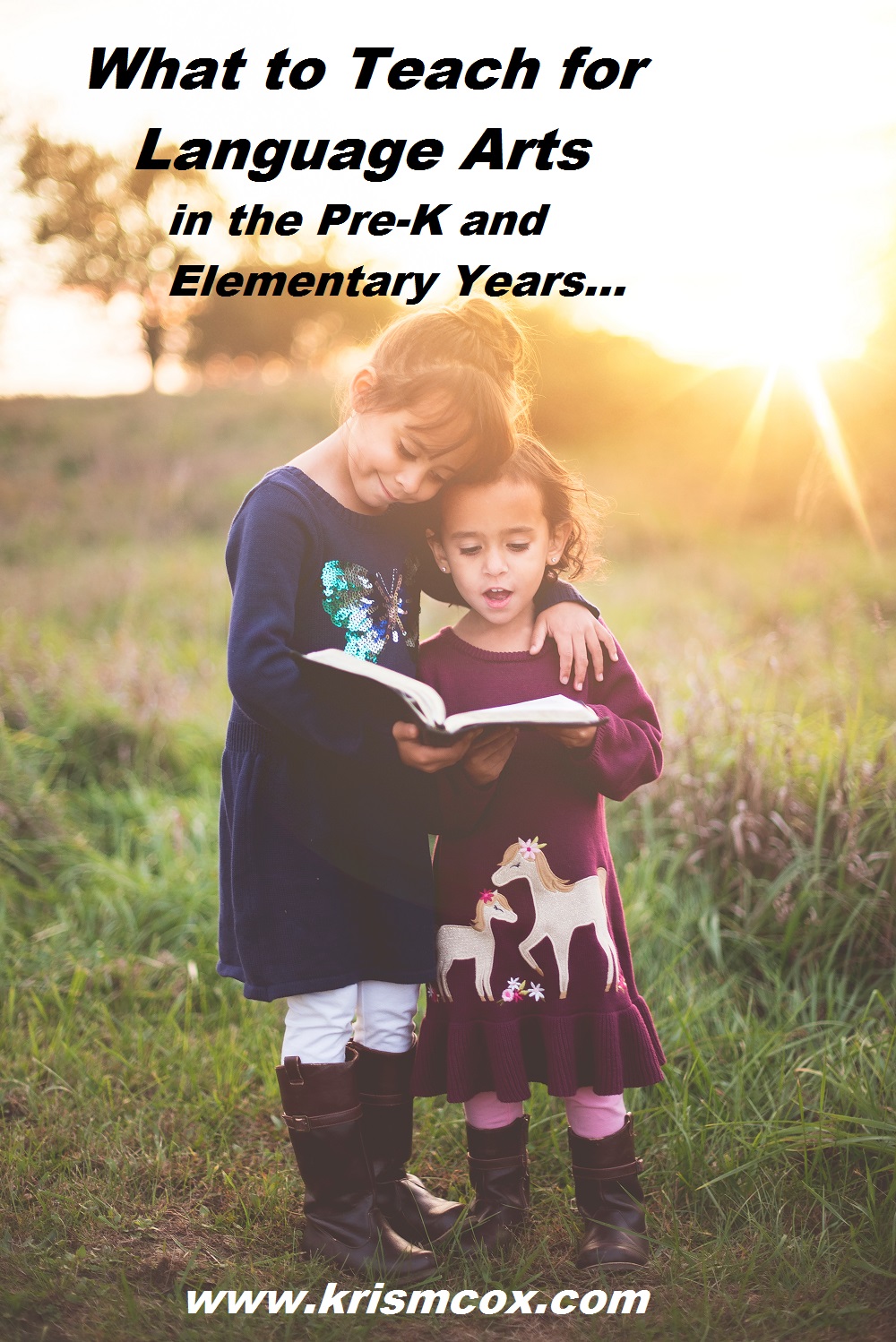

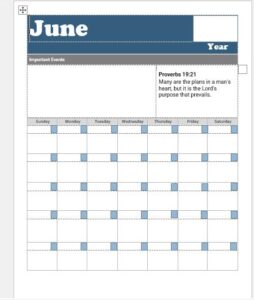
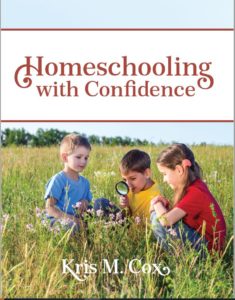


Kris, this us remarkable! What a helpful guideline for homeschooling! I believe it also would be useful for public school education. Great job!
Thank you Sandy!